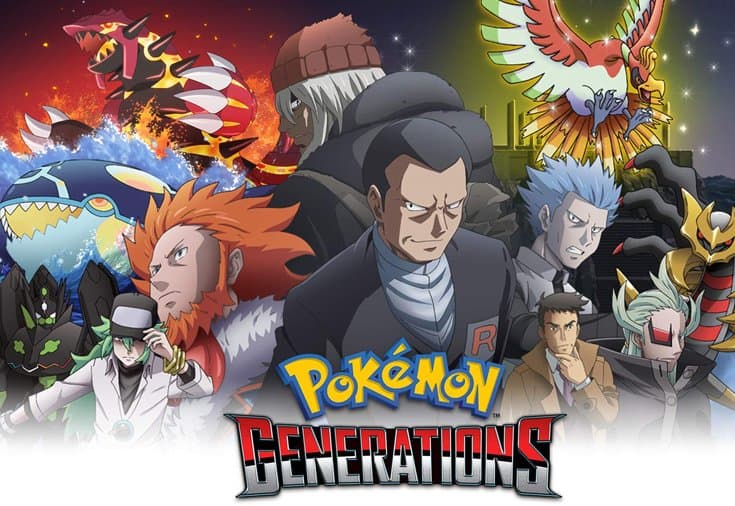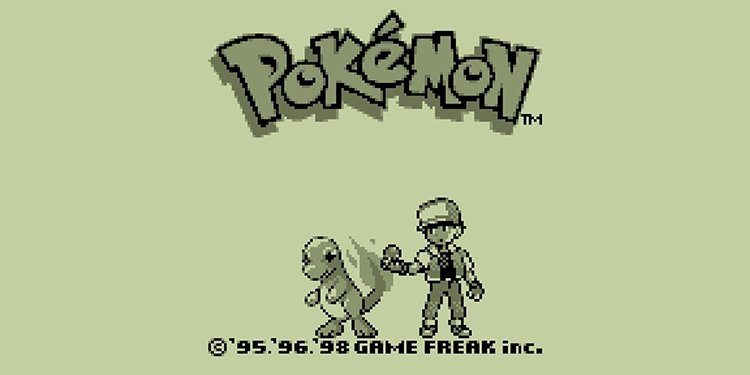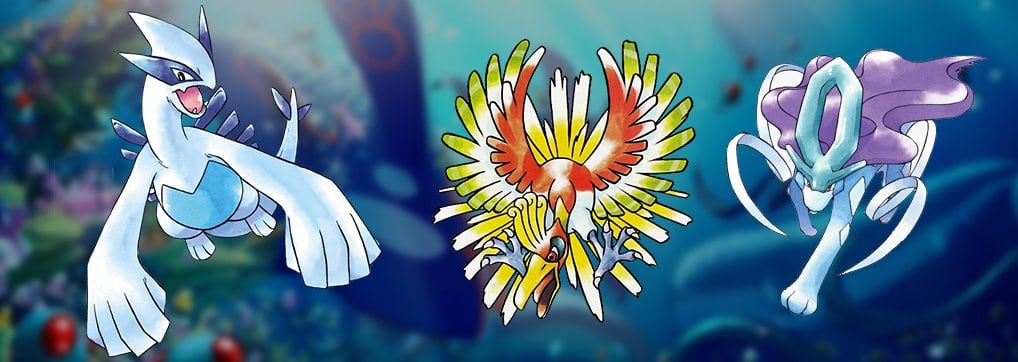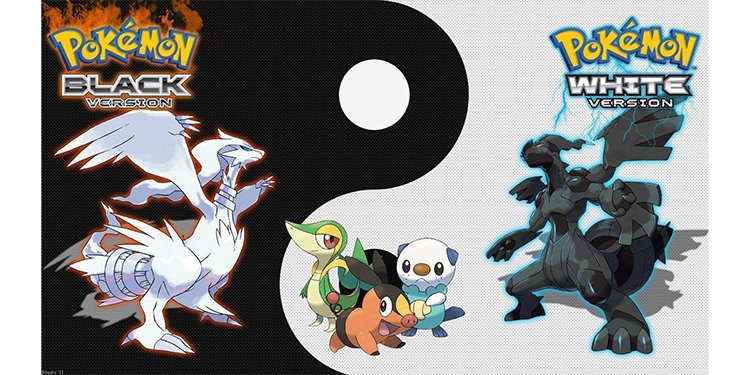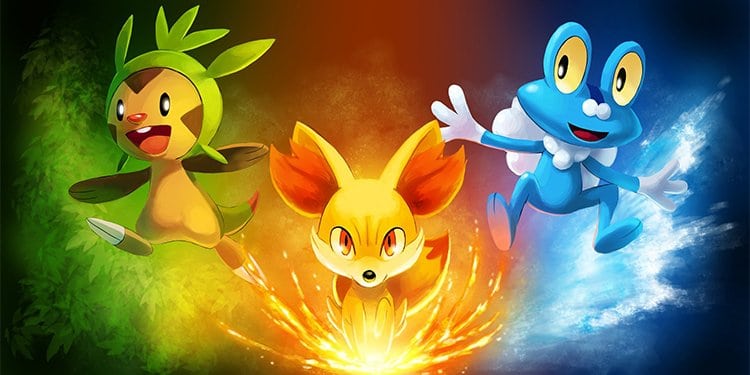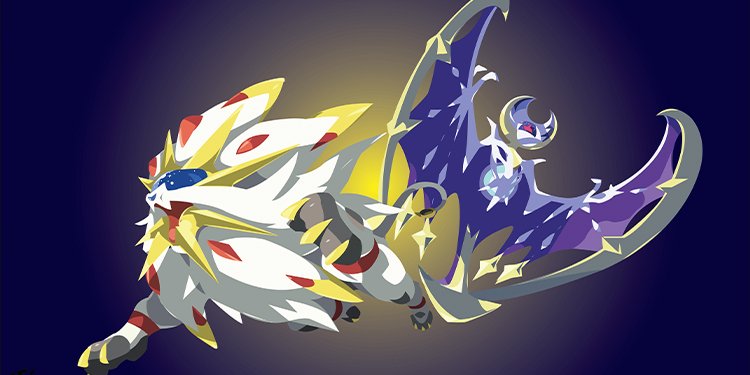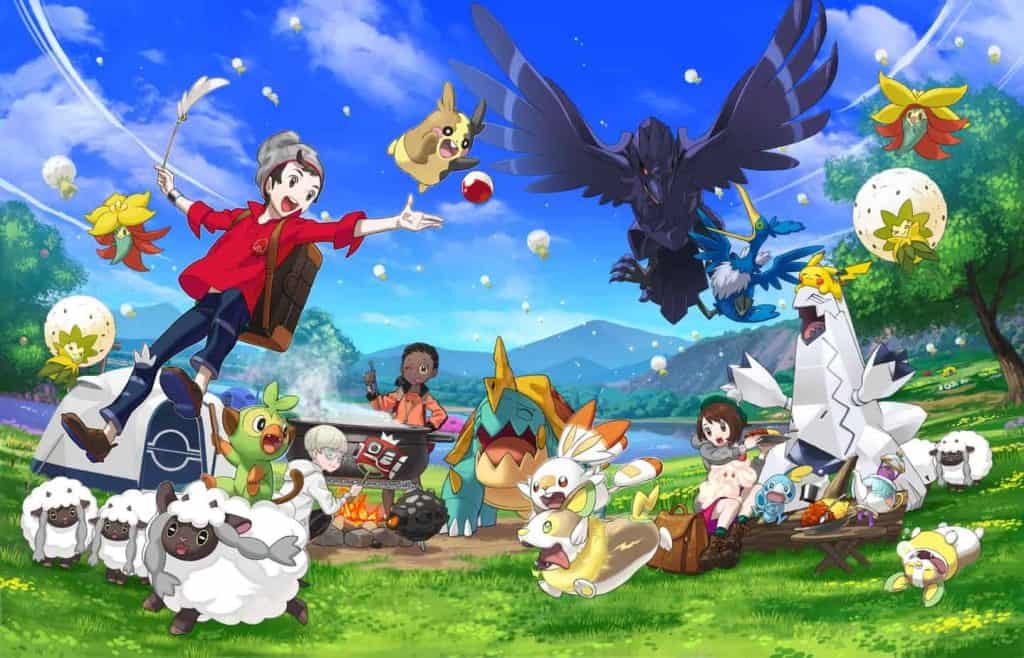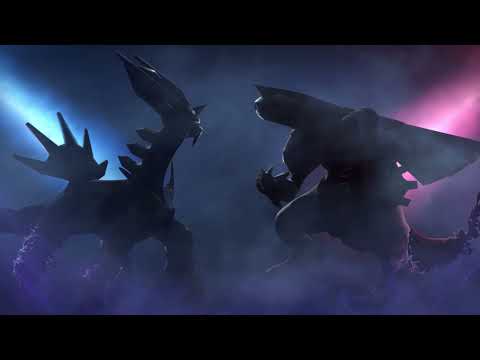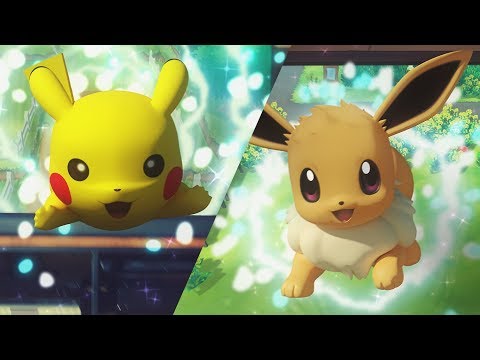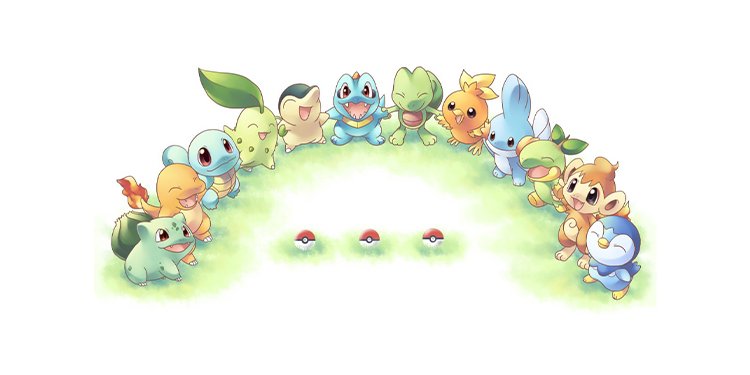Following its Japanese meaning (Pocket Monsters), it’s only natural that the main Pokémon games are RPGs for portable consoles. The main series follows young Pokémon trainers as they compete in tournaments, rise in ranks, and catch Pokémons. Meanwhile, trainers crush the plans of evil organizations like Team Rocket or Team Plasma. Pokémon games are Nintendo exclusives. Game Freak studio creates the handheld games, whereas other studios like Niantic takes care of the console and smartphone spin-offs.
Pokémon Generations
The main series happens across 8 generations. Each gen relates to a console age and covers a period within the Pokémon mythos. Similarly, each generation introduces a new set of Pokémons, regions, characters, and RPG mechanics. These changes come with a duo or trio of Pokémon games. Additionally, each generation introduces a new iteration of Pokémon media. These are, for example, console spin-off titles or anime seasons in the same region as the games.
Main Pokémon Games in Chronological Order
Here’s the chronological order of the generational titles:
Main Titles of Pokemon Saga
The grand total is 31 games of the main Pokémon saga, including both originals and remakes. Aside from the handheld games, there’re perhaps over a hundred Pokémon games throughout Nintendo’s history. I’ll put some order into it, but I’m leaving some of the spin-off titles behind.
1st-Gen: Red, Green, Blue, and Yellow
The “Chromatic” generation debuted in 1996 for Game Boy. The first two editions were Red and Green, with Charizard and Venasaur on the covers, respectively. The Green edition only debuted in Japan. Then came the Blue edition, with Blastoise on the cover and the American Red edition. These came out in 1998. Finally, the Yellow Special Edition debuted in 1998 as well. It features Pikachu on the cover. He’s also your character’s on-screen compassion and your starter Pokémon. The games happen in the Kanto region, and there’re 151 Pokémons to find. Your starting choices through Professor Oak are Bulbasaur, Charmander, and Squirtle. You can find the older Pokémon titles on ROM sites.
2nd-Gen: Gold, Silver, and Crystal
The next trio of Pokémon games, Gold, Silver, and Crystal debuted around 2001, rounding up both Japanese and American release dates. These were the first games of the franchise that allowed choosing the character’s name. In particular, Crystal first ever allowed players to choose their gender. Moreover, it included additional subplots compared to Gold and Silver. Either way, the generation introduced several new Pokémons, so the game had 251 species. The new region is Johto, and starter Pokémons are Chikorita, Cyndaquil, and Totodile.
3rd-Gen: Ruby, Sapphire, Emerald, FireRed, LeafGreen
The “Advanced” gen debuted for Game Boy Advance in 2002, when Nintendo released Ruby and Sapphire. Emerald debuted in 2004 with minor graphical changes and a new battle mode. These games introduced 135 new Pokémons, so the new cap became 386. There’s also a new area, Hoen. Speaking of which, the map was more detailed than ever. Other significant additions include new RPG mechanics like Pokémon Natures. Lastly, the generation introduced Fire and Green remakes (FireRed and LeafGreen) in 2004. These happen in Kanto but share traits with gen-3 games. That way, the studio made Gen I, Gen II, and Gen III compatible.
4th-Gen: Diamond, Pearl, Platinum, SoulSilver, HeartGold
Diamond and Pearl debuted in 2006 for Nintendo DS. These are at the top of the Pokémon games sale charts. Reaching the newer Nintendo DS portable consoles meant further upgrades, like using the tactile screen. Other upgrades include a Wi-Fi connection, underground locations, and a 3D game design. Most notably, the game added a day-to-night cycle with five periods. Alongside the cold-snowy mountains of the map, it created an immersive place to explore. In 2008, Pokémon Platinum debuted as a remake of both Diamond and Pearl. Another addition was a “Wi-Fi Plaza” players could visit to play mini-games. Similarly, the game introduced a GTS system that enables anonymous Pokémon trading with real players via Wi-Fi. Either game includes 107 new Pokémons, so the total number became 493. The new region was Sinnoh, and starter Pokémons were Turtwig, Chimchar, and Piplup. The fourth gen also brought remakes of Silver and Gold (SoulSilver and HeartGold) in 2009. These incorporate the changes the Nintendo DS allowed.
5th-Gen: Black, White, Black 2, White 2
Black, White, Black 2, and White 2 make up the “Black&White” generation. The original titles debuted in 2010 for Nintendo DS, whereas the sequels reached the market in 2012. These entries introduced 159 new Pokémons, and so the new cap became 649. There were no new Pokémons in the sequels, but the expanded area includes 300 creatures of all generations. The new region was Teselia / Unova, and the starting Pokémons were Reshiram (Black) and Zekrom (White). Lastly, the 5th-gen added significant graphical and performance upgrades over its predecessors.
6th-Gen: X, Y, Omega Ruby, Alpha Sapphire
Pokémon X and Pokémon Y are the sixth generation. These debuted in 2013 for Nintendo 3DS. These entries added 72 new Pocket Monsters plus 48 “Mega-evolutions.” Either way, the new max number was 721. The setting is the Kalos region. The location takes inspiration from real-life locations as the Eiffel Tower turned into the Prism Tower. Other novelties included character customization options, battles against Pokémon hordes, and new RPG mechanics. More importantly, the starter Pokémons are Chespin, Fennekin, and Froakie. Lastly, the generation includes remakes of 3rd-gen games in 2014. These are Pokémon Omega Ruby and Pokémon Alpha Sapphire. As usual, the remakes and the main titles are compatible. The remakes have the advances, the “XY” gen brought forward. Also, compared to the original games, Alpha Sapphire and Omega Ruby offer players a Secret Base they can customize.
7th-Gen: Sun, Moon, Ultra Sun, Ultra Moon
Pokémon Sun and Pokémon Moon debuted for Nintendo 3DS and Nintendo 2DS in 2016. These games introduced 81 new Pokémons (grand total 802), as well as the Alola region. On top of that, Sun & Moon delivers the greatest amounts of novelties the franchise had ever seen. Some examples are PokémountsZ-Moves, and new battle and training mechanics. Another important addition was Z-Crystals, which players can earn in Gims. These enable powerful moves trainers can do once per battle. Regional Pokémons were also a significant addition. These are Pokémons with different shapes depending on the region’s climate. Lastly, starter Pokémons are Rowlet, Litten, and Popplio. In 2017, Nintendo released Pokémon Ultra Sun and Ultra Moon, enhanced versions of the original 7th-gen titles. These introduced new Pokémons plus alternative storylines that focus on Pokémon Necrozma.
8th-Gen: Sword, Shield, Brilliant Diamond, Shining Pearl
Pokémon Sword and Pokémon Shield debuted in 2019 for Nintendo Switch. Remember, the Switch is both a handheld console and a tabletop device. The generation includes 81 new Pokémons, plus 13 new regional forms. That means, currently, there’re about 883 Pokémons. Once again, the area is Kanto, and the starter Pokémons are Grookey, Scorbunny, and Sobble. In 2020, Nintendo released expansions for both games: Armor Island and The Crown Tundra. Later on, Nintendo released a re-edition of the original games, which includes the expansion content. The re-editions are the ones you’d find today. As novelties, Sword and Shield changed how random encounters function. Instead of fighting against wild Pokémons when walking in grass, wild Pokémons walk free in the world. Additionally, the games added an open-world area. The games excluded some old additions, like Z Moves and mega-evolutions. In return, they added new concepts like Galar regional forms and “Dynamax,” a mechanic that allows Pokémon to grow in giant sizes temporarily. ILCA studio is currently working on 4th-gen game remakes. You can pre-order Pokémon Brilliant Diamond or Pokémon Shining Pearl. These will debut for the Nintendo Wii in late 2021 and offer a Chibi-style design (cutesy miniature models). Brilliant Diamond and Shining Pearl are the only Pokémon games of the main series not made by Game Freak. Here’s the trailer:
Spin-offs Titles
Spin-off games offer some extra features to Pokémon fans. Notably, they allow you to fill the Pokedex, as well as trading (or fighting) Pocket Monsters between compatible consoles and handheld games.
1st-Gen
Pokémon Stadium debuted for Nintendo 64 in the year 2000. It’s about arena Pokémon combat in 3D. Players could transfer their Pocket Monsters from Red, Blue, and Yellow versions. Pokémon Trading Card Game premiered for the Game Boy Color in 1996. It’s about collecting cards of the original 151 Pokémons.
2nd-Gen
Pokémon Stadium 2 debuted in 2001 for Nintendo 64. It adds new game modes, minor graphical upgrades, and the second-gen Pokémons. Pokémon Colosseum belongs to 3rd-gen games. It debuted in 2004 for Nintendo GameCube. Genius Sonority studio was behind the title. Colosseum offers a single-player campaign, as well as Pokémon duels. More importantly, it allows players to use their Game Boy Advance creatures.
3rd-Gen
Pokémon XD: Gale of Darkness is Colosseum’s sequel. It debuted in 2005 for GameCube. This RPG game continues the story of the first title, which is capturing “Shadow” Pokémon. Pokémon Box debuted for GameCube in 2004. It’s a simple storing center for your Ruby, Sapphire, and Pearl Pokémons. Inside the box, Pokémons can reproduce and breed unique creatures. The game was only available for US players.
4th-Gen
Pokémon Battle Revolution debuted for Wii in 2007. It’s a straightforward tournament game across 10 different arenas. My Pokémon Ranch debuted in 2008 for Nintendo Wii. It allows players to transfer 1,500 4th-gen Pokémons from Diamond, Pearl, and Platinum. The Ranch holds 3D models of your Pokémons, and you can interact with them through your Miis.
7th-Gen
The 7th-gen Pokémon games are not compatible with any console title. It’s not compatible with previous-gen games either.
8th-Gen
Pokémon Let’s Go, Pikachu and Pokémon Let’s Go, Eevee! (2018) debuted for Nintendo Switch in 2018. They became the first Pokémon games to reach Nintendo’s latest tabletop console. These games happen in the original region, Kanto. You play as a trainer, catch Pokémons by moving the Joy-Con, and then battle against other NPC trainers. Starter Pokémons are Pikachu or Eevee, depending on the version. Also, these games mix features from Pokémon Yellow plus Pokémon Go features. Lastly, the game offers co-op functionality. The Let’s Go titles are compatible with 8th-gen games, as well as Pokemon Go.
Notable Stand-alone Pokémon Games
These games are not compatible with the main games and often offer their own sagas. Hence, these are stand-alone experiences with unique storylines and gameplays.
Pokémon: Mystery Dungeon series (2005 – 2020)
There’re twelve games of the Pokémon: Mystery Dungeon series. The last one, Rescue Team DX, debuted for Nintendo Switch in 2020. The series makes you play as a human who transformed into a Pokémon. The gameplay is turn-based across different dungeons.
PokéPark series (2009 – 2011)
Pikachu’s Adventure and Wonders Beyond are adventure-puzzle games where you control Pikachu across a PokéPark. They are available for Nintendo Wii.
Pokémon Rumble Series (2009 – 2020)
There’re five games in the Rumble series. They offer toy Pokémon combat across multiple maps. The last one, Pokémon Rumble Rust, debuted for Nintendo Switch in 2020.
Pokémon Go (2016)
Pokémon Go, by Niantic, was 2016’s cultural phenomenon. It’s an augmented reality game that allows players to find 3D Pokémon in the real world via the app’s geolocalization. Catching Pokémon means traveling streets, parks, and buildings. Once players catch the creatures, they can duel against other players. The game is available for Android and iOS devices. Here’s a video about trainer battles in Pokémon Go, as it’s one of the game’s latest significant updates:
Detective Pikachu (2016)
Creatures Inc. made the adventure game that later became a movie. It debuted for Nintendo 3DS in 2016. You play as a detective named Tim Goodman, who’s capable of understanding a brilliant Pikachu. Together, both detectives must solve a case relevant to the entire Pokémon species.
Pokkén Tournament (2016)
Pokkkén tournament, by Bandai Namco, combines the Tekken franchise with Pokémon characters for a classic 2D fighting game. It debuted for Wii U in 2016.
Pokemon Master EX (2019)
Masters EX is a free-to-play “gotcha” game for iOS and Android. It debuted in 2019. The game offers 3v3 tournament battles, and the goal is becoming the champion.
Do You Need to Play Pokémon Games in Order?
The timeline of Pokémon games relates to their release date. The remakes are not part of the timeline. However, each generation offers a stand-alone experience within the familiar Pokémon world. These games share minor connections, but you don’t need to play all of the games to understand what’s going on.
Pokémon Games Compatibility
Pokémon titles are compatible with others of the same generation. Sometimes, these games are compatible with titles from gens below or gens above. That allows players to trade Pokémons with each other or dueling real players. Notably, unlocking unique Pokémon evolutions requires player-to-player trading. Also, players can exchange items like Pokéballs.
